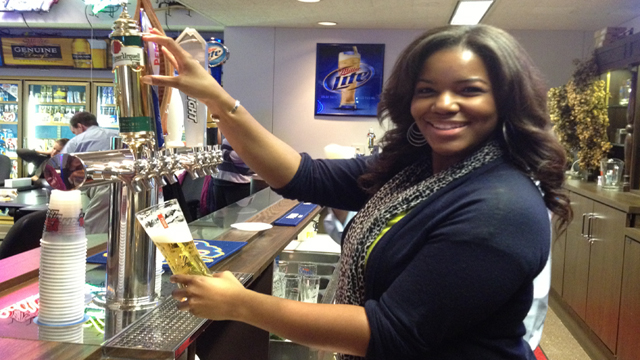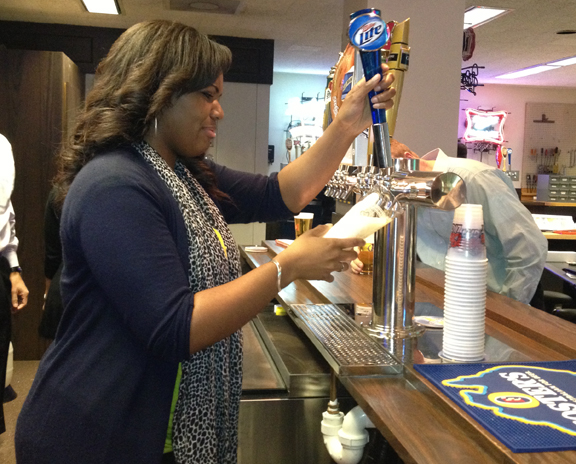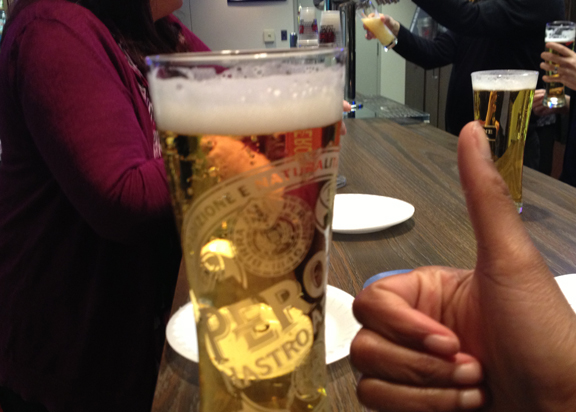Let’s face it, when you’re out at a bar or restaurant and order a beer, you typically get it back and take a sip without realizing the art or skill involved in the perfect pour. After attending one of the many workshops for new employees at Welcome to MillerCoors, I realized that A) the perfect pour exists and B) it’s something you can never take lightly. From the type of vessel and how it’s cleaned, to the way the bartender pulls on the tap, many factors can impact the taste—and who doesn’t want to have a quality experience?
All of us newbies got to step up to the plate and try our hand at the perfect pour. I have to say, I struck out quite a few times … unless you have one of those “glass-half-full-of-foam” outlooks on life. In that case, I would say my first attempts were a total win. There are a few keys to success, so whether you’re doing the serving or watching the server, here’s what you should look out for:
• A firm tap pull from the bottom of the handle (slow pour or high pull = more foam)
• 90-degree angle between top of glass and bottom of tap
When you get to a place where beer is served (in the beer biz, we call it an on-premise account) you can look around and get a pretty good idea of whether you want to drink the beer there. You want to see people drinking beer in glasses with a firm-looking foam head that isn’t wrought with huge bubbles or fizzing like a soda. Yeah, bubbles mean they used soap, but you don’t want sudsy beer. Think of it like the times your mom packed your lunch in Tupperware and your sandwich tasted like the inside of the dishwasher … not cool. With a quality pour and a quality glass you get a quality beer experience where you’re likely to order up or (serve up) a second round. For me, the third time was the charm. Cheers!



